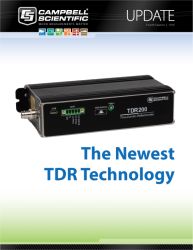
Water and Earth Technologies (WET), a Campbell Scientific integrator, is a water resources and environmental engineering firm. WET provides engineering services in the areas of surface-water and groundwater hydrology, flood warning, data acquisition, hydraulic structure design, geomorphic design, erosion and sediment control, wetland hydrology, and data management. WET was hired by a Panamanian mining company to design and install water quality and sediment monitoring stations throughout a copper mine. The mine is located in the District of Donoso, Colón Province, Panamá.
The mine is approximately 5,900 hectares in 2016 and over the life of the mine will grow to the permitted 13,600 hectares. On average, the mine will produce roughly 320,000 tons of copper annually for the life of the mine. Based on the environmental impact statement, the mine must monitor sediment loads and turbidity in the water leaving the mine. WET was able to collect almost five years of pre-disturbance conditions before construction began on the property.
WET chose the OBS501 to measure turbidity at four monitoring stations at the mine after other turbidity probes could not survive the heavy sediment loads of the watershed. The OBS501 is perfectly suited for the lotic environments of the rainforest: high sediment loads and high opportunity for biofouling. The monitoring stations are located on the Rio Del Medio, Rio Botija, Rio Petaquilla, and the Rio Molejon.
Each monitoring station has a CR800 datalogger and communicates the data back to a base station running Novastar5 (Trilynx Systems) via an Orbcomm satellite radio (Quake Q1000). Conductivity and water temperature (AquiStar CT2X conductivity/temperature), water level (CS475 radar level sensor), rainfall (Hydrolynx 1 mm buckets), and turbidity (OBS501) are monitored at each station. The radar level sensor is also used to trigger an automated sampler to collect water samples.
Each monitoring site has two OBS501 sensors: an upper sensor and a lower sensor to allow for monitoring turbidity at both base flow and storm flow conditions. The conduit is required to protect the sensors during flood events that can completely cover the sensors in sediment. After flood events, significant maintenance is often required to remove the sensors from the bed material. Data collected at Rio del Medio from 24 July 2016 to 2 August 2016 includes the low-flow side-scatter turbidity record, 15-minute rainfall, and water-surface elevation as measured by the radar level sensor.
WET deployed their first four OBS501 sensors in February of 2016. They have been back for field maintenance once over the summer of 2016. They were pleased to find the optical windows clean and the shutters working perfectly in one of their most challenging monitoring environments. WET has purchased two more OBS501 sensors to be installed at the third monitoring station, and plans to purchase the last two in the near future.

